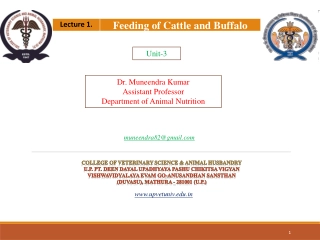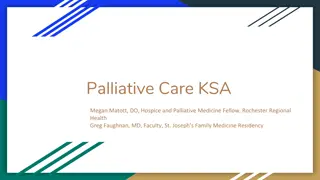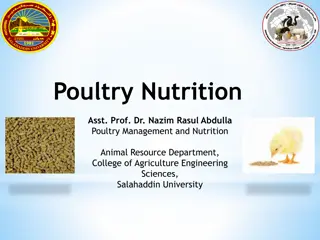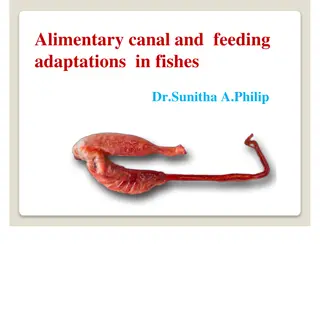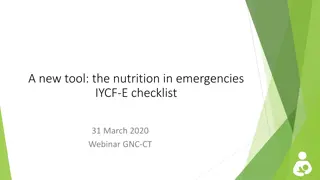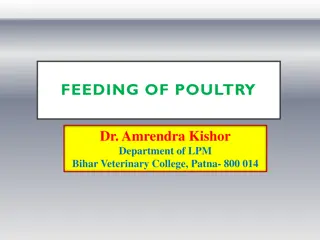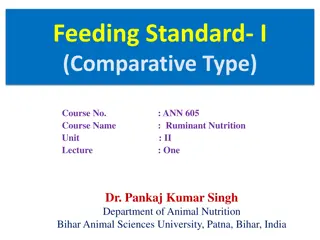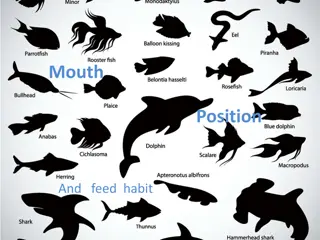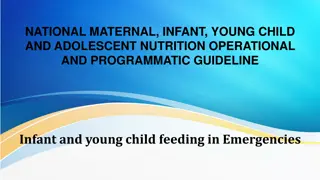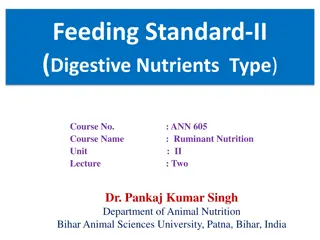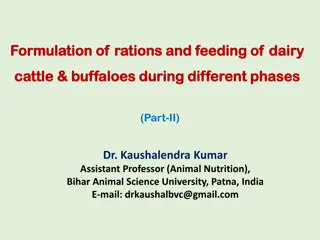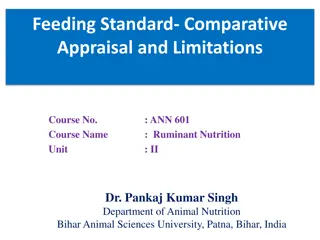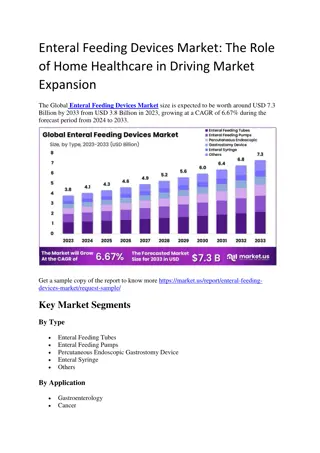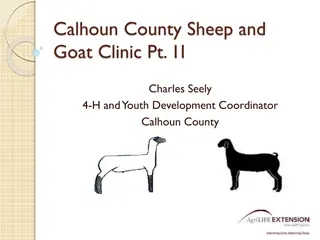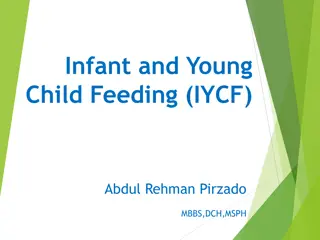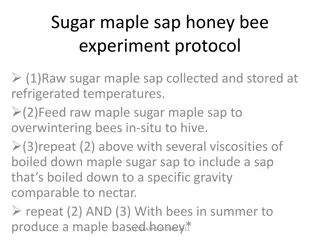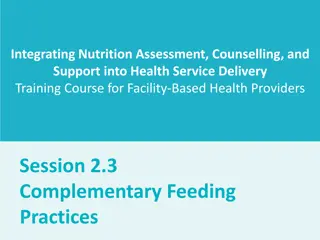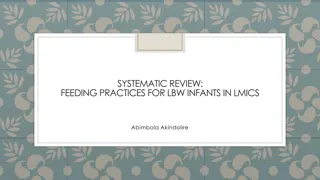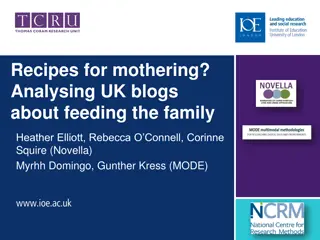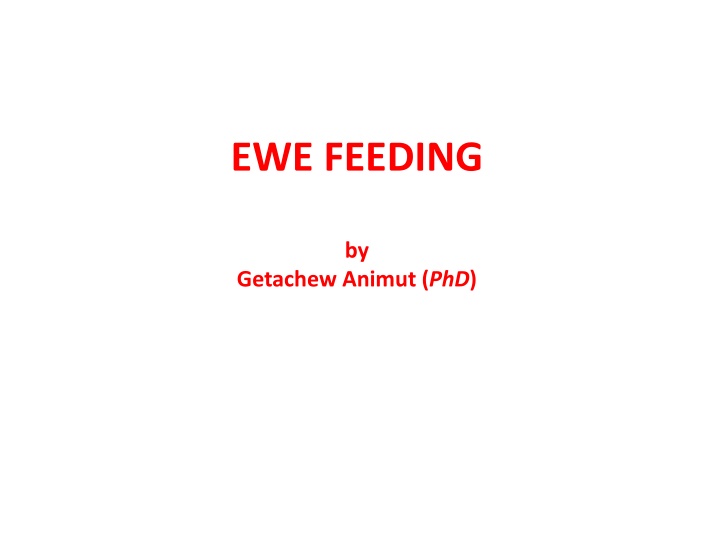
Ewe Feeding and Nutritional Management for Healthy Pregnancy
Learn about the nutritional needs of ewes during different stages of production, from feeding guide to managing gestation, with essential tips to enhance lambing percentage and prevent pregnancy toxemia.
Download Presentation

Please find below an Image/Link to download the presentation.
The content on the website is provided AS IS for your information and personal use only. It may not be sold, licensed, or shared on other websites without obtaining consent from the author. If you encounter any issues during the download, it is possible that the publisher has removed the file from their server.
You are allowed to download the files provided on this website for personal or commercial use, subject to the condition that they are used lawfully. All files are the property of their respective owners.
The content on the website is provided AS IS for your information and personal use only. It may not be sold, licensed, or shared on other websites without obtaining consent from the author.
E N D
Presentation Transcript
EWE FEEDING by Getachew Animut (PhD)
Ewe's nutritional needs are not static. Feeding an ewe depends upon many factors Age Weight Body condition Her stage and level of production. Environmental factors and level of exercise A wide variety of feedstuffs can meet the nutritional needs of ewes during their different production stages. There is no one perfect feeding program. The choice of the feeding program will depend primarily upon the cost and availability of feedstuffs which may vary up on geographic region
Flushing Feeding the ewe to make her gain weight about 2 weeks before breeding Increase lambing percentage by increasing the number of eggs that the ewes ovulate. Flushing works best on thin ewes. Ewes that are already in good body condition usually do not respond well to flushing. You can flush ewes by feeding them 230 to 460 gm of grain per day moving them to a better pasture. If flushing is continued through the breeding season, it may enhance embryo survival during early pregnancy.
Early-to-mid gestation Early/mid gestation is a period when placental development occurs from day 30 to day 90 of gestation. Placental size or weight affects nutrient transfer between the ewe and the her fetuses. Underdeveloped placentas result in lower birth weights regardless of late gestation nutrition. Twenty-one (21) days of severe underfeeding or 80 days of moderate underfeeding can affect placental development. Generally during this period the nutritional need of the animal for gestation is not much higher than the non- pregnant animal
Late gestation About 70% of fetal growth takes place during late gestation (last trimester of pregnancy) The capacity of abdominal cavity to accommodate enough forage may decrease during this stage. So ewe should be fed a better quality diet to meet their nutrient needs. Feeding ewes during late gestation depends upon the number of fetuses the ewe is carrying. Underfeeding will result in the birth of small lambs. Small lambs are less resistant to stress and will have slower pre-weaning growth. Most of the ewe's mammary development occurs during late gestation. Underfeeding will reduce the yield and quality of milk. Big lambs increase lambing problems and have a higher mortality rate. Ewes carrying singles do not need to receive grain as early as those carrying multiple births.
Pregnancy toxemia Pregnancy toxemia or ketosis is the most common nutritional disorder that occurs during late gestation. It is caused by an inadequate intake of energy during late gestation. As the ewe breaks down her body fat to meet her increasing nutritional needs, toxic ketone bodies are produced. The ewes that are most prone to pregnancy toxemia are ewes carrying multiple births, thin ewes, old ewes, and fat ewes, . Treatment is to increase the blood glucose level.
Milk fever Milk fever is different in sheep as compared to dairy cattle in that symptoms occur pre-lambing. Milk fever is low blood calcium. It is caused by either inadequate intake of calcium or the inability to mobilize calcium reserves. Vaginal prolapses tend to occur more frequently in fat ewes or ewe lambs carrying multiple fetuses. Preventing ewes from becoming overfat and limiting intake are two ways to reduce vaginal prolapses.
Lactation Lactation places the greatest nutritional demand on ewes. How much you feed an ewe will depend upon how many lambs she is nursing, her size and condition, and the time of the year the lambs are born. Ideally, ewes should be separated into production groups and fed according to the number of lambs they are nursing. A general rule of thumb for concentrate feeding of lactating ewes is about 450 gm of grain for each lamb nursing the ewe. Protein and energy are both critical nutrients for milk production. If either nutrient is fed below the requirement, milk yields and lamb gain will be reduced. After the first 60 days of lactation, you should reduce the amount of feed you are feeding because all it will accomplish is making the ewes fat. Most ewes will lose weight during lactation. Weight loss during lactation affects protein requirements. The more weight ewes lose, the higher their protein requirement.
Water Lactating ewes require a lot of water It is estimated that lactating ewes require 100 percent more water than non-lactating ewes. Ewes should have a free-choice supply of fresh, clean water at all times.
Weaning Weaning often takes place at a time when ewes are still producing a lot of milk. In this is the case, grain should be reduced 1 to 2 weeks prior to weaning. For the last week or so prior to weaning, no grain should be fed to the ewes. For the last several days before weaning, ewes should be fed a low quality forage or straw. After the lambs have been weaned, the ewes should be maintained in dry lot and fed low quality forage or straw until their udders start to dry up and recede.
Maintenance The maintenance period period after weaning to next flushing Maintenance means the ewe only needs to maintain her body weight or have slow growth to recover the weight (condition) she lost during lactation. A wide variety of low-cost feedstuffs can meet the maintenance requirements of ewes. Pasture or grass hay can maintain them

